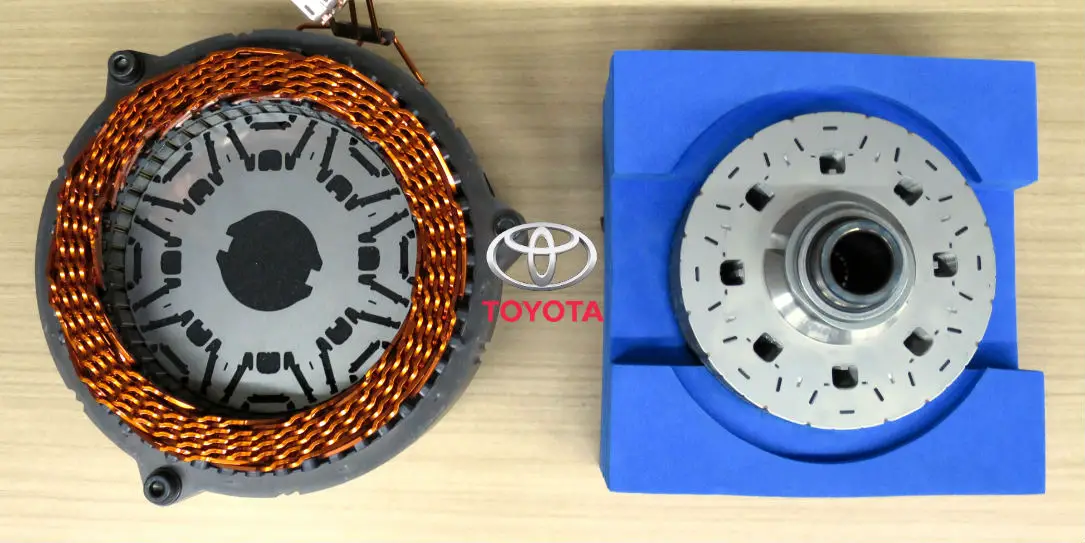Nearly everything we do and everything we create relies on some form of material provided by the earth. Even as we push to reduce our fossil fuel consumption, alternative energies still rely on certain organic materials. Electric motors use magnets that implement the use of rare-earth materials such as neodymium. While neodymium is classified as a rare-earth material, it is still a fairly abundant resource. That doesn’t mean we shouldn’t think ahead in preserving as much of that material as possible. That’s the position Toyota has taken by creating a new magnet that Toyota is calling the “world’s first neodymium-reduced, heat-resistant magnet.”
The company says the new magnet can operate in high-temperature conditions making it ideal for electric motors. Toyota says no terbium or dysprosium were used in the development of this magnet either, both critical rare-earth materials. However, the company did replace some of the neodymium with two other low-cost rare-earth materials, lanthanum and cerium.
Neodymium plays an important role in maintaining high coercivity – the ability to maintain magnetism – and heat resistance. Simply reducing the amount of neodymium and replacing it with lanthanum and cerium would cause a decline in motor performance, so Toyota adopted new technologies that suppress any deterioration in these qualities. The result is a magnet with equivalent levels of heat resistance, but with a reduction of up to 50 percent in the amount of neodymium used.
This new type of magnet is expected to be useful in expanding the use of motors in areas such as automobiles and robotics, as well as maintaining a balance between the supply and demand of valuable rare earth resources. Toyota will work to further enhance performance and evaluate the magnet’s use in products, while accelerating the development of mass production technologies with the aim of early adoption for different applications, including vehicles and robotics.
The development of elemental technologies for motors, inverters, batteries and other components will require steady R&D in anticipation of future needs. Toyota considers these technologies to be essential for electrified vehicles and will continue to make steady progress in every area while working to build a foundation to support the increased use of electrified vehicles in the future.
This development shows that automakers are sinking money into electric car research, which is a good thing. It will be interesting to see where Toyota’s development goes from here. You can hit the link below to read the company’s full presentation on the development.
What do you think of this new magnet? Let us know in the comments below, or on Google+, Twitter, or Facebook.
[button link=”http://media.toyota.co.uk/2018/02/toyota-develops-new-magnet-electric-motors-aiming-50-per-cent-reduction-use-critical-rare-earth-elements/” icon=”fa-external-link” side=”left” target=”blank” color=”285b5e” textcolor=”ffffff”]Source: Toyota[/button]









